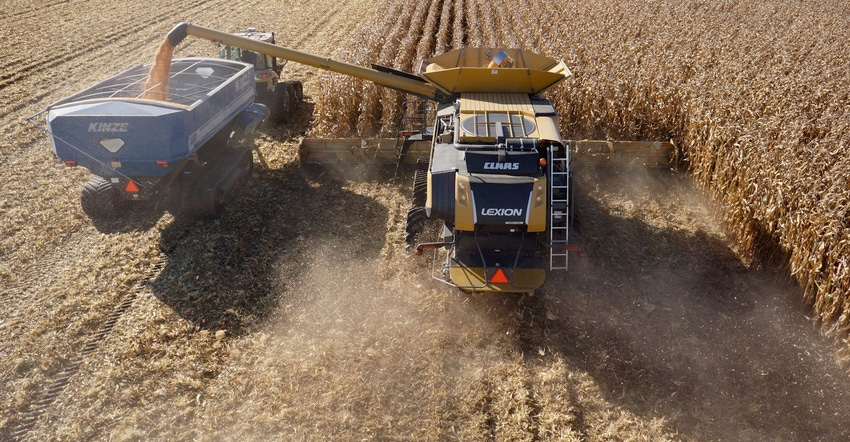April 26, 2017

The idea of using variable-rate tech has been growing over the past decade for planting, fertility and spraying, but what about harvest? That's the idea behind the tech Claas has brought into its Lexion machines and the company says variable rate harvesting offers increased efficiency for farmers.
To make that happen, however, Claas had to pull together some significant tech of its own. The Lexion combine contains some innovations, and on-the-go adjustment, not available on other combines, which makes this concept possible.
"At harvest, that [variable rate] mindset and how you approach your fields is lacking," says Brandon Olstad, platform manager, Claas. "We've released tech to gain efficiencies and performance advantages based on natural variation in the field."
Of course, the casual reader and experienced combine operator will first react by noting that to create variable rate harvesting you'd have to be able to change combine settings on the go. Since farmers first turned to combines, the goal was to get that grain threshing system set to meet most of the field demand and operate at a single speed. The settings could change throughout the day, based on changing conditions, but that was mostly a manual process.
Even with newer electronic combine setting systems, the process was neither continuous, nor on-the-go. That changed when Claas released its Cemos Automatic system two years ago. The system does change combine settings autonomously and continuously on the go using information from a range of sensors that detect moisture and yield changes.
Olstad notes that over time the idea of variable-rate application and crop production has evolved. "Originally the idea was to change approaches to make fields look the same with consistent yields across an entire area," he explains. "But over time this has evolved to putting product on the higher yielding areas and maintaining lower areas."
That resulting variable-application yield map isn't one consistent yield across a field, instead the management zones provide the top yield that ground can handle. Which in some fields can vary widely, but Olstad explains that the Cemos system can handle those changes.
Putting the pieces together
Cemos Automatic is the first step, and the list of new tech in the combine continues. Cruise Pilot can change the ground speed based on crop volume, engine load and losses. The recently introduced 4D Cleaning System will adjust the rotor cover positions to distribute grain across the sieve in sloped portions of the field. Auto Crop Flow monitors key components to guard against slip, blockages and damage. And Auto Slope senses the fore and aft angle of the machine to alter fan speeds and adjust sieve positions to reduce grain loss. And finally, dynamic cooling adjusts the cooling fan speed identified by power consumption loads for better engine cooling. And a cooler engine burns less fuel.
In essence, the system is designed to speed up and slow down - both in processing and ground speed - based on conditions. It's a new way to think about harvesting. Olstad also notes that there are some safeguards here, because no one really wants to be in a combine going 8 mph through a thin stand of corn (regularly).
"You can set the maximum and minimum speeds of the combine to operate in a safe zone," Olstad says.
Related: Upfront combine review - our look at the latest in combine head technology
He adds that during unloading on the go, swinging out the unloading auger also makes a change: "When you engage the unload auger it locks the combine at that speed so the cart driver won't have trouble staying with you," he said.
As for potential savings? Olstad points to the fact that running with lower load at a higher speed through the lower yielding parts of the field, your productivity and efficiency rises. In a high productivity area of the field, that combine is going to burn more fuel, but when the yield thins and you run at a lower rpm and a higher speed you can gain some of that fuel economy back, Olstad explains.
There's also value in what an inexperienced operator can do with these automatic systems. In some cases, this tech can make improve on an operator's skills.
"Machine size has a cost," he says. "if you're using the horsepower and capacity of the machine, that horsepower has a value attached to it. We like to see farmers make investment decisions on equipment based on performance. You might be able to use a lower class-size machine with this technology to outperform a larger class machine."
Variable rate harvesting is a relatively new idea being pushed by one manufacturer. The tech involved is the next step in autonomous adjustment of a combine. Claas is carving a new business model here and it's one they can own for now. The tech is also part of their forage harvester line, which uses similar load-management tech to keep those machines working at peak.
If you want to know more about variable rate harvesting, visit your Claas dealer or claas.com for more information.
You May Also Like




